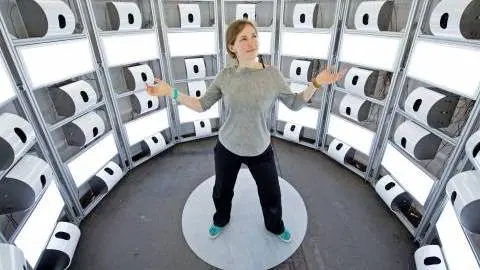3D printing is a threat to world trade but its impact is still limited
The share of 3D printed goods in global manufacturing could rise to 5% over the next two decades. That is a significant increase from the current share of 0.1%, but much lower than in the two scenarios in our 2017 report. The effect on world trade is more subdued as well, at -4.5%. This implies, on average, 0.2 percentage points less trade growth per year
The re-bundling of the production process
3D printing can hurt world trade in two ways. Firstly, 3D printing usually means the re-bundling of production phases, because 3D printers can make the (intermediate) product as a whole. So it shortens the supply chain leading to less trade in intermediates. And as far as 3D printing is part of a strategy to produce closer to the customer - given the rising popularity of local for local - it leads to less cross border trade as well.
The re-bundling of the production processes does not in all cases lead to proportionally less trade
Economically, 3D printing is mainly used as a production method for customised or complex-shaped products. Experience shows that it is not a given that all customised 3D printed products are made close to the consumer. In an interesting Worldbank study, Freund et al (2018), showed that in the case of hearing devices and dental crowns, 3D printing has not led to localisation as production only takes place in a few countries.
According to this research, the lack of skilled labour in many countries is an important reason that the production of, for example, hearing devices isn't done in the countries where they're used. The thought that with the arrival of relatively cheap and small 3D desktop printers, dentists would all start printing crowns themselves, has not materialised. At least not yet. So the re-bundling of the production processes does not in all cases lead to proportionally less trade.
Customisation is a key part of 3D printed products
Secondly, hearing aids and dental crowns are customised products. Customisation usually gives the supplier of the product pricing power, meaning they can more easily pass on the costs of, for example, transport to the buyer.
A third reason why the cost of transport has apparently not been prohibitive for centralising production in a few countries is that the likes of hearing aids and dental crowns are light and small. That makes them relatively cheap to transport.
A product's size is more important than its weight when gauging the effect of 3D printed products on trade and transport
Of course, not all 3D printed products are light and small. 3D printing is, for example, used a lot for making metal products. But since roughly three-quarters of all exported products are transported by container ships and the costs of that are foremost determined by the size of the product, weight is less important.
Knowing that many 3D printed goods are customised goods and those which are usually of the size between a marble and a football, transport costs are often not decisive when choices are made regarding the location of production of three printed goods. In other words, it seems plausible to assume that transport costs are less determinative for the profit margin of 3D printed products than for those produced en mass.
This means that the substitution of traditional production methods by 3D printers probably does not always translate into bringing production closer to the consumer. So it also doesn’t translate into less trade and transport.

Earlier, we stated that, although we recognise that forecasting the speed of the technological improvements of 3D printing is very hard and perhaps not a task for economists. But we feel comfortable with a rise in the market share of 3D printing, in total manufacturing, to about 5% in the long run. Calculations show that, given a slight increase in the growth rate of the 3D printing business, this share can be reached by around 2040.
A manufacturing share of 5% for 3D printed products by 2040 would have a permanent downward effect on the size of world trade of around 4.5 percentage points of global trade. That is if all printed goods were to be made close to the consumer. But keeping the experiences of dental aids and hearing devices in mind, the effect of switching to 3D printing on world trade will be somewhat lower, around 3% to 4% for goods. Taking into account the part of traded services that are linked to the goods trade, the damage to trade adds up to 4.5%
Concluding remarks
Currently, 3D printing is economically not competitive for producing uniform products en mass such as rubbish bags, bottles, plugs and so on. As long as this is the case, 3D printing will not lead to large changes in the complex cross border value chains that currently characterise the way mass products are made. Of course, further technological developments in 3D printers can change that, but industry experts don’t expect this to happen anytime soon.
3D printing is economically not competitive for mass production
This means that 3D printed goods will in the short run consist mostly of customised and complex-shaped products made as one-offs or in a series of relatively low quantities
This doesn’t mean however that there is little room for growth of the 3D business. In line with some industry experts, we expect that the number of applications will expand as machine, material, and operational costs are driven downward and customised products become more popular. We also think that the adoption of this technology will accelerate because the threshold fear is diminishing since 3D printing has proved its usefulness in a wide range of markets during the pandemic.
We expect that the share of 3D printing in global manufacturing could well rise to 5% over the next two decades. This will have a downward influence on the growth of cross border trade and transport. But the effect will be less than proportional because transport costs are financially less important for customised products than for standardised ones. This makes us believe that the downward effect on trade and transport will be less than 5%, around 3 to 4%.
This publication has been prepared by ING solely for information purposes irrespective of a particular user's means, financial situation or investment objectives. The information does not constitute investment recommendation, and nor is it investment, legal or tax advice or an offer or solicitation to purchase or sell any financial instrument. Read more
Download
Download article
5 August 2021
3D printing’s post-pandemic potential This bundle contains 4 Articles